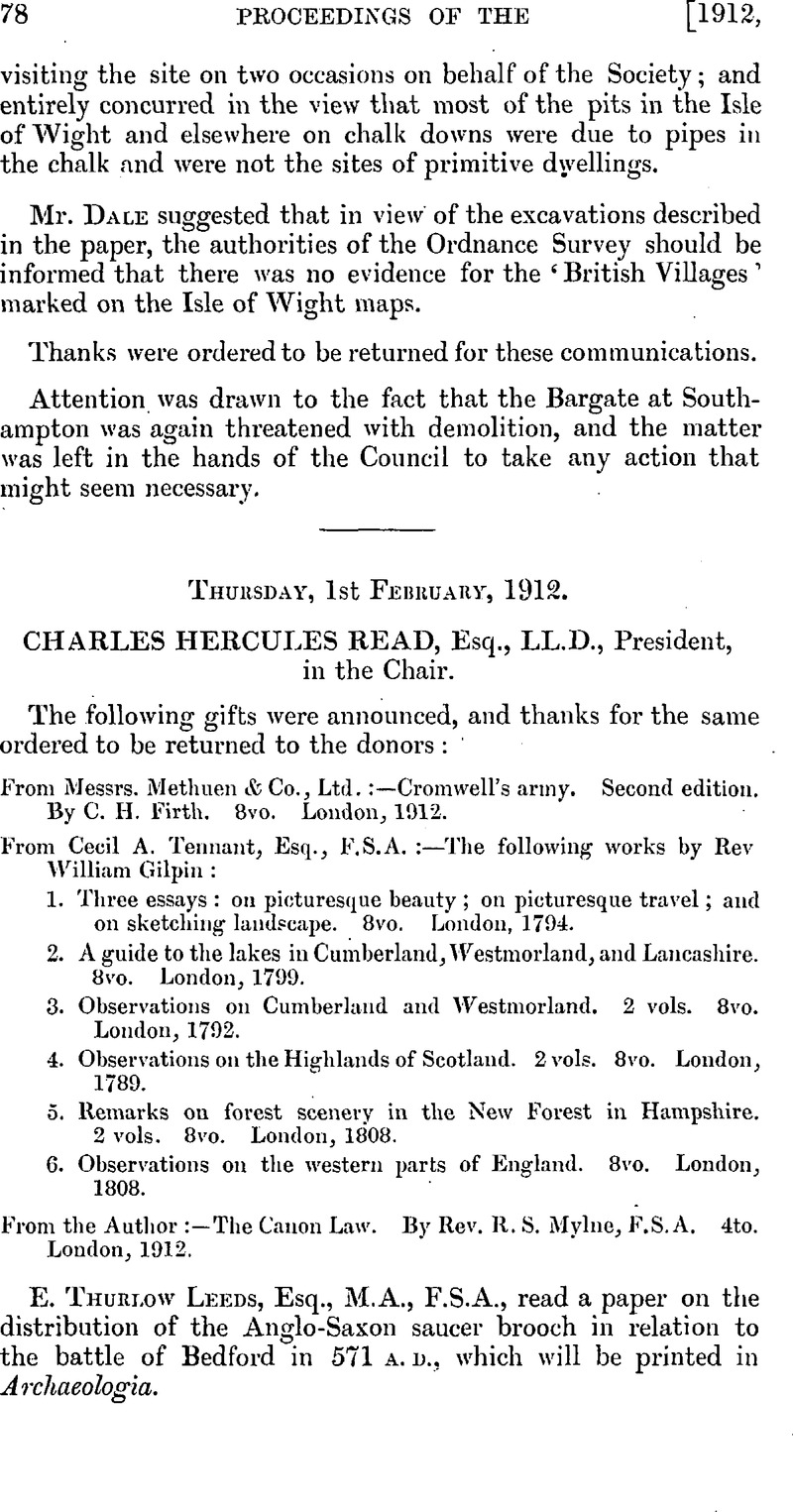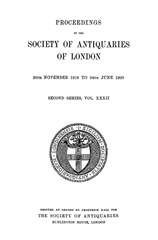No CrossRef data available.
Article contents
Thursday, 1st February, 1912
Published online by Cambridge University Press: 10 May 2010
Abstract

- Type
- Proceedings
- Information
- Copyright
- Copyright © The Society of Antiquaries of London 1912
References
page 80 note 1 Proceedings, xxiii. 283.
page 82 note 1 Archaeologia, lxii, pt. i, pp. 333 ff.
page 88 note 1 Proc. Soc. Ant. Scot., xxxviii. 48, and fig. 21.
page 88 note 2 Another possible explanation is that the tumulus was at one time planted with trees, whose roots may have been instrumental in depositing the sherds at the places of discovery.
page 93 note 1 On the map (fig. 1) the position of deep ditches, still existent, or belts of trees, now destroyed, has been designated by crosses x x x x. These may have had some connexion witli Abbot Godfrey's enclosure. It will be seen that they extend northward almost to an accommodation road known as Rumphrey's Balk. In this name undoubtedly may be seen a survival of that mentioned by William of Whittlesey, in his account of Abbot Godfrey's activities in the second year of his rule, where it is recorded that he made. ‘apud Rumpele prope Eyebiri cuniculare novum de sumptibus IX sol. VII den.’


